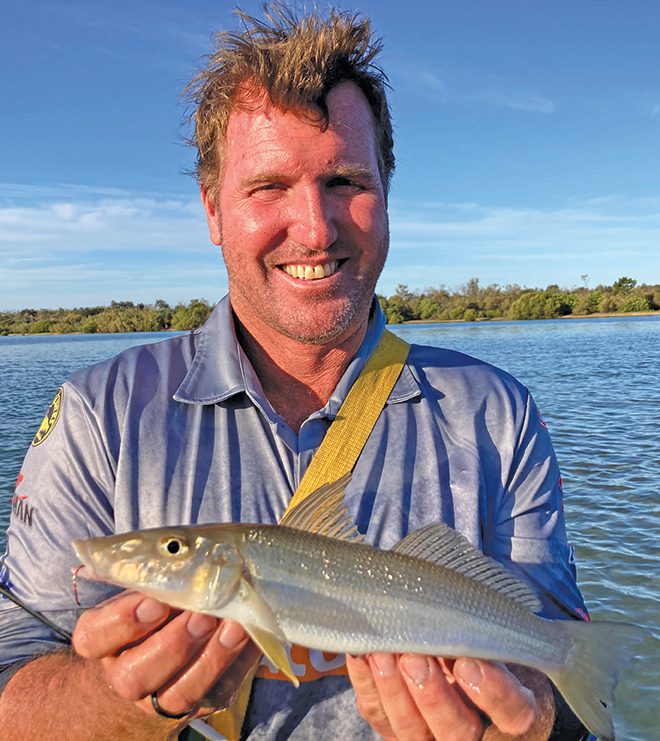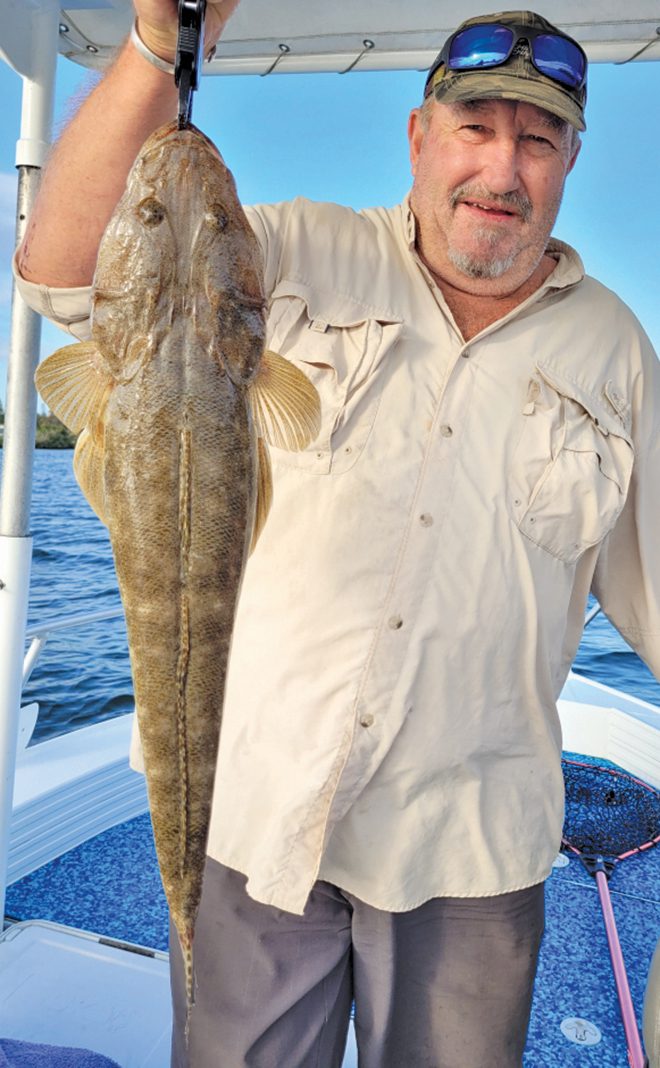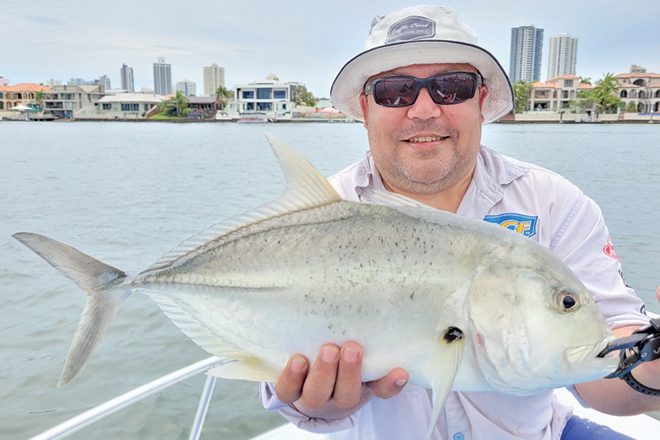Hi everyone, another year is nearly over – doesn’t time fly? Especially when you’re fishing. December is when we start complaining about being too hot and fish such as sand whiting, trevally and mangrove jack revel in the conditions. Brad Smith has returned to fish the Tweed River and has been reporting catches of solid flathead and trevally on his favourite lures, which include Samaki Vibelicious Forktails and Pontoon 21 Crack Jack 48 SP DR. Winter whiting summer
One fish that is present all year round in the Gold Coast Broadwater is winter whiting. Contrary to its name, the ‘winteries’ – also known as diver whiting – don’t mind any of the seasons. This may be because they are usually present in deeper estuary water, which is the 3-6m range around here. This water is usually cooler and less changeable than the surface. Winter whiting summer

The humble winter whiting grows to only about 30cm, but they definitely don’t lack in numbers or taste on the plate. The other positive is wherever they are present, you’ll also catch sand whiting, tuskfish, flathead, tarwhine, bream, squire, flounder… the list goes on. Finding winter whiting is usually not that hard. Look for little patches of fish slightly above the bottom on your fish finder in depths of 3-6m. Then stop the boat and drop lines while drifting. Winter whiting summer
The best tides to work these zones are ones that vary from 0.7-1.2m in tide change height. If there is a higher tidal coefficient, you’ll need to time your fishing efforts closer to the tide changes. In short, it makes it harder to catch fish if the drift is too fast. The fish would rather not fight a strong current to get a feed. In this case, find areas outside the main flow and you’ll likely find fish feeding. Winter whiting summer

Winter whiting are not fussy eaters on most days but there are a few offerings that will get them biting. Freshly pumped yabbies are hard to beat, though Ecogear Marukyu Isome worms in red definitely attract these fish too. Ecogear Marukyu Isome worms are a soft plastic lure technically but are biodegradable and smell like berries. Designed in Japan where fishing has been an obsession for a lot longer than in Australia, these people know what they’re doing.
The tackle is simple – 2-4kg, 7’ rods with soft tips, 2500-size reels spooled with 10lb monofilament line, then a sliding number three ball sinker, small swivel, 1m of 10lb fluorocarbon leader, then a size 4 short bait holder hook. I mix up both yabbies and Ecogear worms on the same day. Thread the yabbies through the tail underside and up with the hook protruding near the head.
CLICK HERE TO READ THE FULL ARTICLE!!!
To book on a charter with myself or Brad, or if you have any fishing related questions, SMS 0432 990 302 or email fishingwithclint@gmail.com, or find us on Facebook at Brad Smith Fishing Charters.
 Bush ‘n Beach Fishing Magazine Location reports & tips for fishing, boating, camping, kayaking, 4WDing in Queensland and Northern NSW
Bush ‘n Beach Fishing Magazine Location reports & tips for fishing, boating, camping, kayaking, 4WDing in Queensland and Northern NSW









